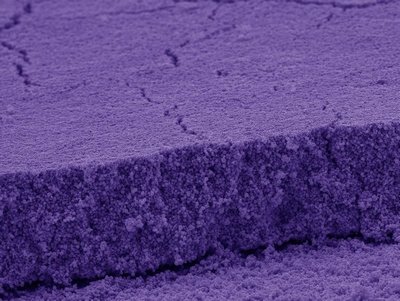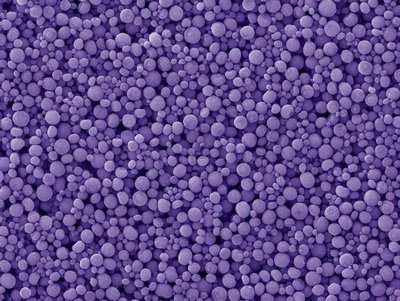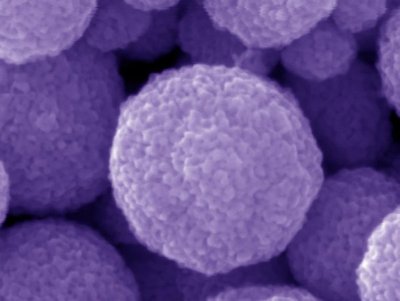April 10, 2008
Popcorn-ball design doubles efficiency of dye-sensitized solar cells
A new approach is enabling researchers to create a dramatic improvement in cheap solar cells now being developed in laboratories.
By using a popcorn-ball design — tiny kernels clumped into much larger porous spheres — UW researchers are able to manipulate light and more than double the efficiency of converting solar energy to electricity. The findings were presented in New Orleans at the national meeting of the American Chemical Society.
“We think this can lead to a significant breakthrough in dye-sensitized solar cells,” said lead author Guozhong Cao, a UW professor of materials science and engineering.
Dye-sensitized solar cells, first popularized in a scientific article in 1991, are more flexible, easier to manufacture and cheaper than existing solar technologies. Researchers have tried various rough surfaces and achieved higher and higher efficiencies. Current lab prototypes can convert just over one-tenth of the incoming sun’s energy into electricity. This is about half as efficient as the commercial, silicon-based cells used in rooftop panels and calculators.
The UW researchers did not attempt to maximize the overall efficiency of a dye-sensitized solar cell to match or beat these previous records. Instead, they focused on developing new approaches and compared the performance of a homogeneous rough surface with a clumping design. One of the main quandaries in making an efficient solar cell is the size of the grains. Smaller grains have bigger surface area per volume, and thus absorb more rays. But bigger clumps, closer to the wavelength of visible light, cause light to ricochet within the thin light-absorbing surface so it has a higher chance of being absorbed.
“You want to have a larger surface area by making the grains smaller,” Cao said. “But if you let the light bounce back and forth several times, then you have more chances of capturing the energy.”
Other researchers have tried mixing larger grains in with the small particles to scatter the light, but have little success in boosting efficiency. The UW group instead made only very tiny grains, about 15 nanometers across. (Lining up 3,500 grains end to end would equal the width of a human hair.) Then they clumped these into larger agglomerations, about 300 nanometers across. The larger balls scatter incoming rays and force the light to travel a much longer distance within the solar cell. The balls’ complex internal structure, meanwhile, creates a surface area of about 1,000 square feet for each gram of material. This internal surface is coated with a dye that captures the light.
The researchers expected some improvement in the performance but what they saw exceeded their hopes.
“We did not expect the doubling,” Cao said. “It was a happy surprise.”
The overall efficiency was 2.4 percent using only small particles, which is the highest efficiency achieved for this material. With the popcorn-ball design, results presented at the conference show an efficiency of 6.2 percent, more than double the previous performance.
“The most significant finding is the amount of increase using this unique approach,” Cao said.
The experiments were performed using zinc oxide, which is less stable chemically than the more commonly used titanium oxide but easier to work with.
“We first wanted to prove the concept in an easier material. Now we are working on transferring this concept to titanium oxide,” Cao said. Titanium oxide based dye-sensitized solar cells are now at 11 percent maximum efficiency. Cao hopes his strategy could push dye-sensitized solar cells’ efficiency significantly over that threshold.
The research was funded by the National Science Foundation, the Department of Energy, Washington Technology Center and the Air Force Office of Scientific Research. Co-authors are postdoctoral researcher Qifeng Zhang, research associate Tammy Chou and graduate student Bryan Russo, all in the UW’s department of materials science and engineering and Samson Jenekhe, a UW professor of chemical engineering.
Tag(s): clean or renewable energy


